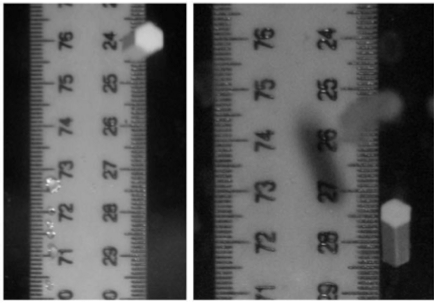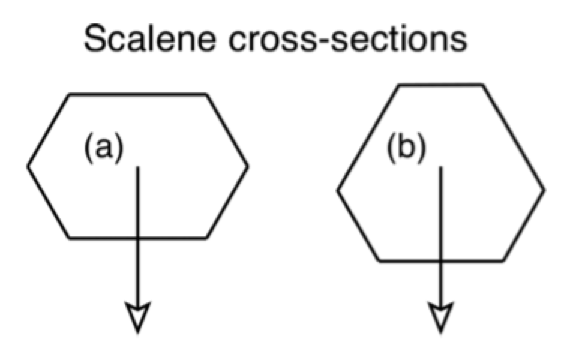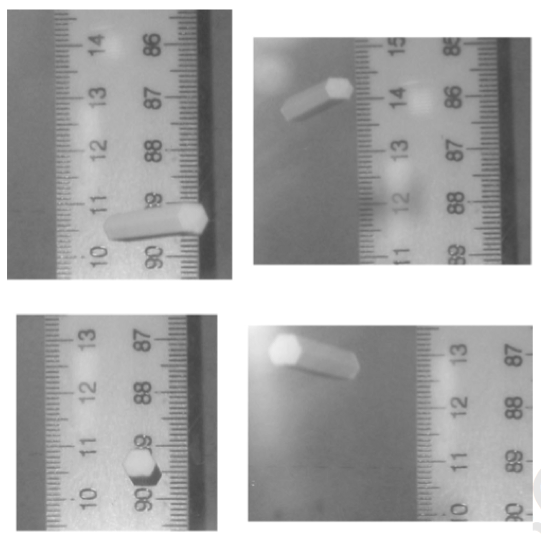A beautiful side-effect of the hexagonal shape of ice crystals is the halos and arcs which they produce. These range from the ‘common’ 22 degree halo (a circle of light around the sun, reddish on the inside, bluey on the outside) to exceptionally rare optical phenomena such as the Parry and Lowitz arcs. In all cases these effects are caused when you have ice crystals between the sun and an observer – in the UK the best conditions from observing these displays is a thin layer of cirrostratus – in colder locations diamond dust and ice fogs near the surface can produce spectacular light shows.

This photo shows what you can see if the light and the crystal shapes are right. And it is not just the shape of the crystal which is a factor: it’s orientation is crucial as well. When ice crystals are very small (<100 microns or so) they are oriented more or less in any old direction in space, because of Brownian motion and turbulence. These randomly oriented crystals are perfect for making 22 degree halos like the one above.
As the crystals grow larger they start to fall through the air at a significant rate. The extra inertia in the airflow around the crystal acts to rotate it towards a preferred orientation – for hexagonal prisms this preferred orientation is such that the longest dimension of the crystals is horizontal. This restricted orientation leads to a concentration of light rays in different regions of the sky – for example the v-shaped arc above the sun in the photo (just touching the 22 degree halo) is formed by hexagonal columns (pencil shaped crystals) with their long axis (ie the pencil lead) horizontal.
Now, on the photo you can see another, rather faint arc above the upper tangent arc – it has an inverted-u shape, and is known as the Parry arc, named after the Arctic explorer WE Parry who was the first to record it. This arc results from an even more restricted crystal orientation – a column which not only has its long axis horizontal, but also has two of it’s rectangular crystal faces horizontally aligned as well. What property of the crystal leads to this extra orientation?
Well to find out, we can take advantage of the principle of dynamic similarity. The idea is that if a particle of a given shape is falling steadily in fluid, the only thing that characterises the flow pattern is the Reynolds number. So I replaced ice crystals with plastic models (hexagonal rods sold in model shops) and air with a glycerine solution. I adjusted the density of the solution so the Reynolds number was similar to crystals in the atmosphere (~1-100). So now we can experiment with different shapes to see which ones give us the Parry orientation.
Well to be honest what I was expecting was that Parry orientation probably comes about from the perfectly formed regular hexagonal column crystals (that’s what the textbooks say), so I thought thats what I’d get using my perfectly regular hexagonal models. So I was surprised to see this:

This is the exact opposite of the Parry orientation – the long axis is horizontal (note effect of viewing angle in these photos) but we have two rectangular faces vertical, not horizontal. So this can’t be the cause of the Parry arc.
So if not regular hexagonal columns, what could be causing the Parry arc? Well, I remembered that often the atmosphere doesn’t always produce perfect hexagonal shapes – real crystals are often a bit ‘scalene’ in their cross section – something like this:
 All of the angles of these hexagonal cross sections are still 120 degrees (so light ray paths are still the same as the regular crystals) – it’s just that the lengths of the sides are now no longer all equal. So I made a flattened column with two long sides and 4 short; and a second model with 3 long sides and three short. Here’s what I saw:
All of the angles of these hexagonal cross sections are still 120 degrees (so light ray paths are still the same as the regular crystals) – it’s just that the lengths of the sides are now no longer all equal. So I made a flattened column with two long sides and 4 short; and a second model with 3 long sides and three short. Here’s what I saw:
 Bingo! It is these scalene crystals which must produce the Parry arc!
Bingo! It is these scalene crystals which must produce the Parry arc!
This kind of experiment is so cheap and easy to do, but I have learned so much about fluid flow and particle orientation from it. At the moment MMet student Judy McConnell is working with the same setup to try and constrain a major climate model sensitivity: the fall speed of ice crystals.
If you’d like to know more, have a look at my paper in the Quarterly Journal: http://www.met.rdg.ac.uk/~sws04cdw/parry2.pdf
Chris